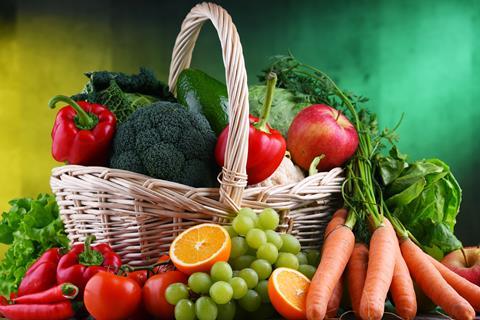Association’s Environmental Footprint Initiative embarks on a shadow Product Environmental Footprint Category Rule for fruit and vegetables
Freshfel Europe has joined with leading players from across the fresh fruit and vegetable supply chain to embark on a shadow Product Environmental Footprint Category Rule (PEFCR) for fruit and vegetables.

According to the association, the PEF methodology specific to the fresh produce sector will standardise environmental footprint methodology for sector calculations, facilitating higher transparency and accountability on environmental matters.
The harmonised methodology will also support sector communication on the strong positive environmental assets of fresh produce consumption, with fruit and vegetables being one of the most sustainable food categories.
The collaborative technical project is a key pillar of the work of the Freshfel Environmental Footprint Initiative, which launched earlier this year.
”Until now efforts within the fresh produce sector to address product sustainability through environmental footprint have been highly fragmented,” Freshfel explained. ”The development of a shadow PEFCR with specific category rules for fruit and vegetables will ensure comparable results of PEF calculations.
”The shadow PEFCR for fruit and vegetables will take two years to develop and will be open twice for public consultation during this period,” the association noted. ”Its development will closely follow the European Commission’s official PEFCR process to be well aligned for future approval as the EU sector standard PEF methodology.
”The methodology will be developed with the technical support of Wageningen Economic Research and will revise the existing HortiFootprint Category Rules for the fresh produce sector.”
Once developed, the shadow PEFCR for fruit and vegetables will be available for sector-wide use as an open resource.
Freshfel Europe director for sustainability Nicola Pisano said that there was an urgent need for transparent and highly accurate product sustainability data within the sector.
”On top of current B2B and B2C demand for environmental footprint information, PEF methodology is likely to be employed by the European Commission in upcoming EU green claims and food sustainability label legislation,” she said.
“The shadow PEFCR methodology for fruit and vegetables will kickstart the sector’s preparedness for this to maintain the industry’s competitiveness in the coming years and it will also meet continuing supply chain needs for accurate and comparable product environmental data.
“Fruit and vegetables are one of the most sustainable food categories,” she added. ”The shadow PEFCR methodology will help the sector better communicate this in the shift towards healthy, sustainable plant-based diets. The whole sector will benefit from the shadow PEFCR now and into the future.”
The fact sheet details information about a PEF methodology for fresh produce, legislative and sector developments around the PEF method, and the benefits of developing a PEFCR for the fresh fruit and vegetable sector.
Freshfel Europe members participating in the Freshfel Environmental Footprint Initiative include Ailimpo, ANPP, Apeel Sciences, Assomela, Bama Gruppen, Bayer AG, BVEO, Coleacp, Dole, Greenyard, Fresh Produce Centre, IG International, Interfel and VBT.
Freshfel Europe itself is acting as sector representative within the Initiative, with support and cooperation from the European Sprouted Seeds Association (ESSA) and Growing Media Europe.



